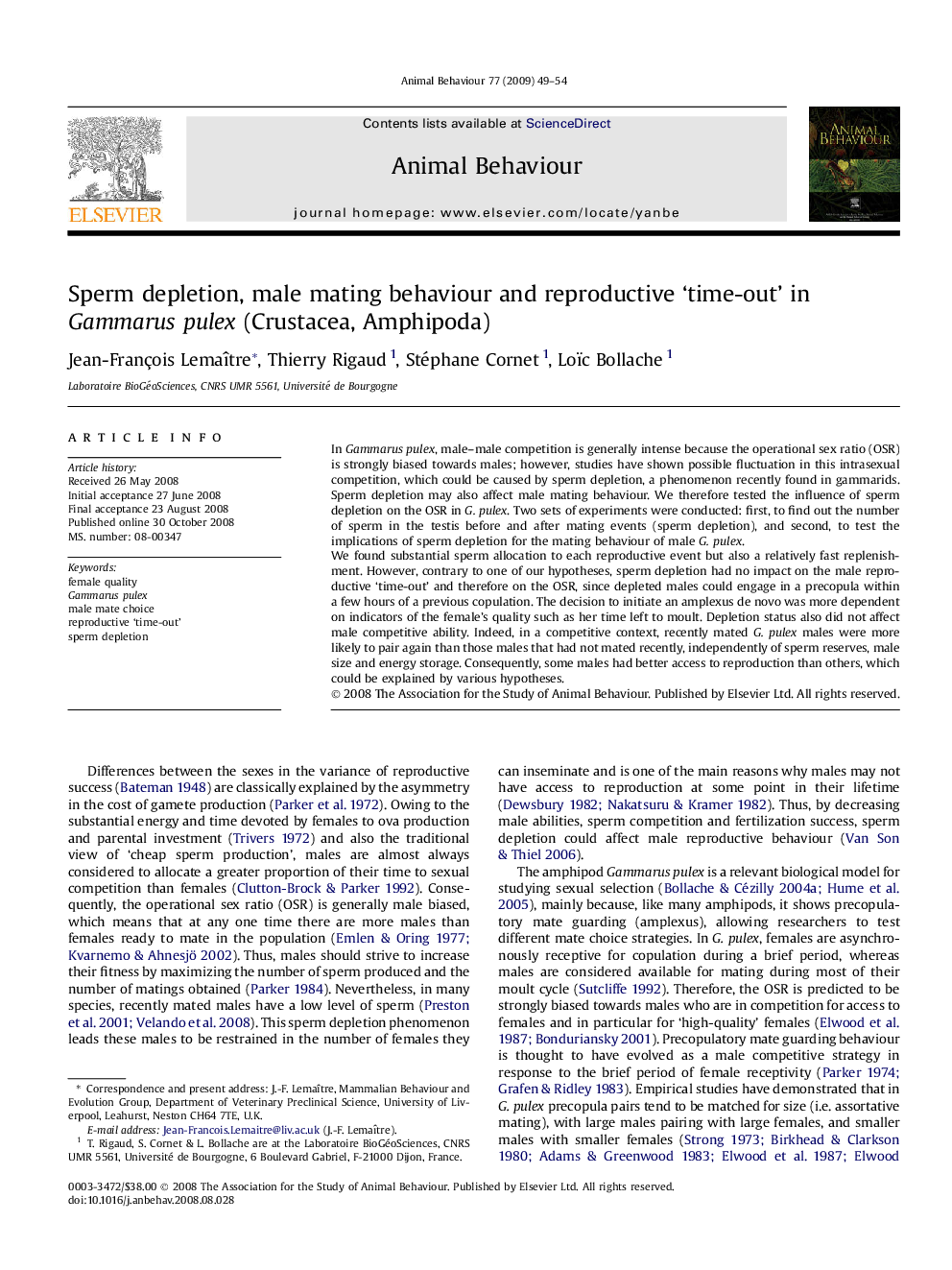| کد مقاله | کد نشریه | سال انتشار | مقاله انگلیسی | نسخه تمام متن |
|---|---|---|---|---|
| 2418357 | 1104344 | 2009 | 6 صفحه PDF | دانلود رایگان |

In Gammarus pulex, male–male competition is generally intense because the operational sex ratio (OSR) is strongly biased towards males; however, studies have shown possible fluctuation in this intrasexual competition, which could be caused by sperm depletion, a phenomenon recently found in gammarids. Sperm depletion may also affect male mating behaviour. We therefore tested the influence of sperm depletion on the OSR in G. pulex. Two sets of experiments were conducted: first, to find out the number of sperm in the testis before and after mating events (sperm depletion), and second, to test the implications of sperm depletion for the mating behaviour of male G. pulex.We found substantial sperm allocation to each reproductive event but also a relatively fast replenishment. However, contrary to one of our hypotheses, sperm depletion had no impact on the male reproductive ‘time-out’ and therefore on the OSR, since depleted males could engage in a precopula within a few hours of a previous copulation. The decision to initiate an amplexus de novo was more dependent on indicators of the female's quality such as her time left to moult. Depletion status also did not affect male competitive ability. Indeed, in a competitive context, recently mated G. pulex males were more likely to pair again than those males that had not mated recently, independently of sperm reserves, male size and energy storage. Consequently, some males had better access to reproduction than others, which could be explained by various hypotheses.
Journal: Animal Behaviour - Volume 77, Issue 1, January 2009, Pages 49–54